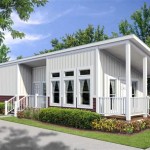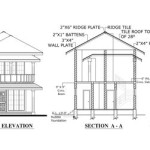Planning for a Resilient Housing Network
Ensuring access to safe, affordable housing is paramount for the well-being of communities. A comprehensive housing network plan serves as a roadmap to address current and future housing needs. This article explores the essential aspects of planning for a robust housing network.
1. Needs Assessment and Data Collection
A thorough needs assessment is crucial to understand the demand for housing in a community. This involves gathering data on household composition, income levels, housing affordability, and market conditions. Demographic projections and population growth trends should be considered to anticipate future needs.
2. Housing Inventory and Analysis
An inventory of existing housing stock provides insights into the availability, quality, and affordability of housing. This includes analyzing the number of units, types of housing, occupancy rates, and rental costs. The analysis helps identify areas with housing shortages or surpluses and areas where housing quality needs improvement.
3. Housing Goals and Objectives
Based on the needs assessment and housing inventory, clear goals and objectives for the housing network should be established. These may include increasing affordable housing, reducing homelessness, expanding special needs housing, or improving housing quality. Quantifiable targets and timelines should be set to monitor progress.
4. Housing Production Strategies
To meet housing goals, a variety of production strategies should be explored. This includes incentivizing the construction of new affordable units, promoting adaptive reuse of existing buildings, and preserving and rehabilitating existing housing stock. partnerships with developers, non-profit organizations, and government agencies are essential.
5. Housing Financing and Incentives
Adequate funding is crucial to support housing production and assistance programs. A range of financing mechanisms should be considered, such as grants, loans, tax credits, and rental subsidies. Incentives for developers to create affordable housing or renovate existing units can also be explored.
6. Housing Support Services
Beyond housing units, support services are essential for maintaining housing stability and improving the quality of life for residents. This includes rental assistance, counseling, financial literacy programs, and support for special needs populations. Partnerships with social service agencies and community organizations are vital.
7. Monitoring and Evaluation
An effective housing network plan requires ongoing monitoring and evaluation to assess progress and adjust strategies as needed. Data collection and analysis should track indicators such as housing production, affordability, and occupancy rates. Regular reviews allow for timely course corrections and ensure that the plan remains responsive to changing needs.
Conclusion
Planning for a resilient housing network is a complex but essential endeavor that requires collaboration among stakeholders, data-driven analysis, and a comprehensive approach. By addressing the key aspects outlined in this article, communities can create a housing system that meets the needs of all residents, strengthens neighborhoods, and contributes to overall well-being.

Planning For Success Throughout Phases Of Housing Stability Orgcode Consulting

Network For A Sustainable Housing Development Scientific Diagram

Improving The Quality Of Life And Sustaility For Middle Class Mass Housing Perspectives From A Stakeholder Work Docomomo Journal

More Draft Regional Norms For Urban Design Scientific Diagram

Resident Organizing Networks

Network Housing Digital Built Britain Centre For Completed Its Five Year Mission And Closed Doors At The End Of September 2024

Implementing The Right To Housing In Planning And Development Tools Canadian Centre For Rights

Housing And Planning Local Government Association

Housing And Planning Constructing Excellence Yorkshire Humber

Map Location Research To Yze The Data Network Planning Wastewater Scientific Diagram








